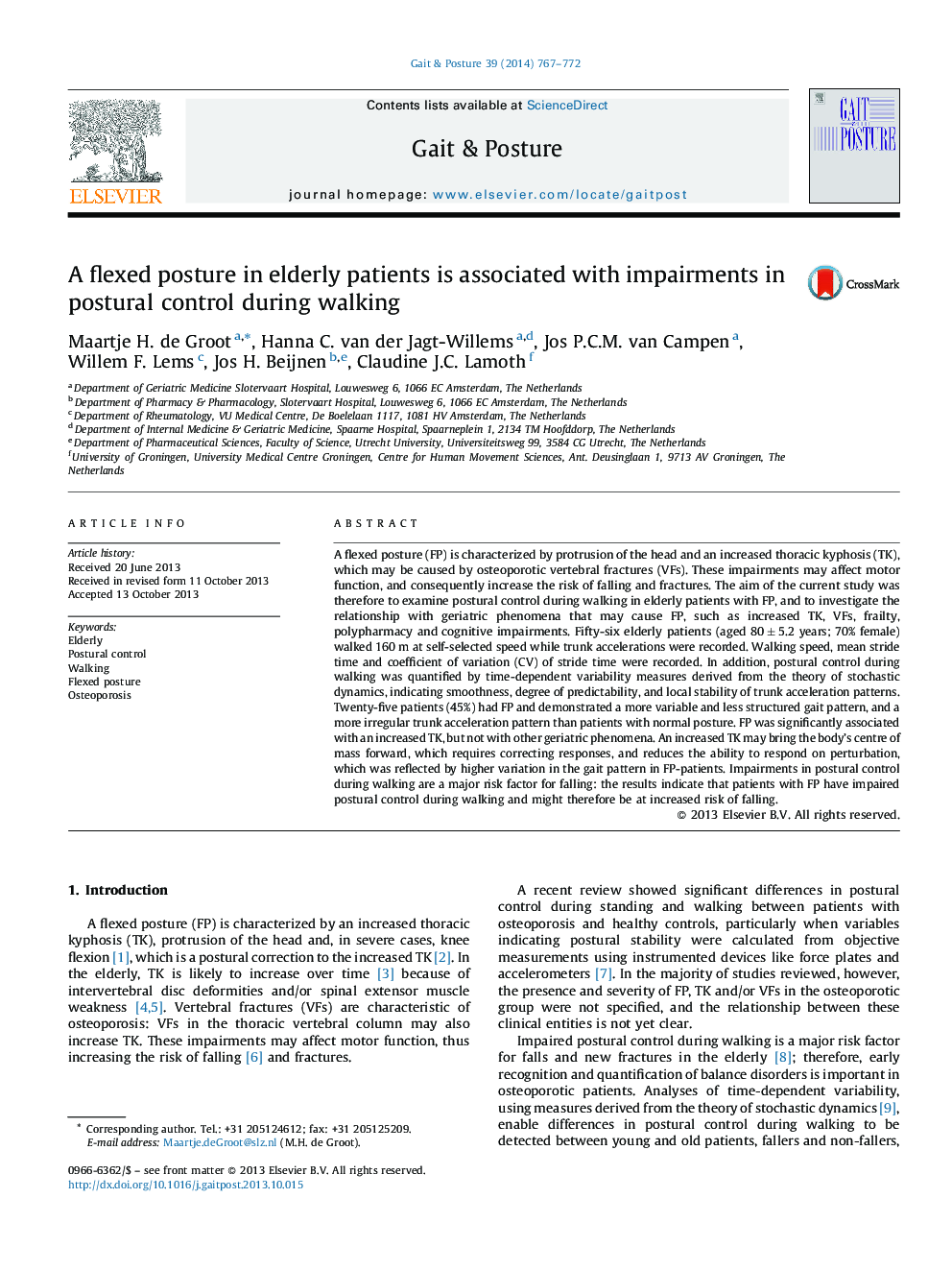| کد مقاله | کد نشریه | سال انتشار | مقاله انگلیسی | نسخه تمام متن |
|---|---|---|---|---|
| 6206398 | 1265646 | 2014 | 6 صفحه PDF | دانلود رایگان |
- A flexed posture (FP) is characterized by an increased thoracic kyphosis (TK).
- Effects of FP on postural control during walking were examined in elderly patients.
- Patients with FP demonstrated more variability in stride-related parameters.
- In addition, a more irregular trunk acceleration pattern was found in FP-patients.
- These results imply that patients with FP might be at increased risk for falling.
A flexed posture (FP) is characterized by protrusion of the head and an increased thoracic kyphosis (TK), which may be caused by osteoporotic vertebral fractures (VFs). These impairments may affect motor function, and consequently increase the risk of falling and fractures. The aim of the current study was therefore to examine postural control during walking in elderly patients with FP, and to investigate the relationship with geriatric phenomena that may cause FP, such as increased TK, VFs, frailty, polypharmacy and cognitive impairments. Fifty-six elderly patients (aged 80 ± 5.2 years; 70% female) walked 160 m at self-selected speed while trunk accelerations were recorded. Walking speed, mean stride time and coefficient of variation (CV) of stride time were recorded. In addition, postural control during walking was quantified by time-dependent variability measures derived from the theory of stochastic dynamics, indicating smoothness, degree of predictability, and local stability of trunk acceleration patterns. Twenty-five patients (45%) had FP and demonstrated a more variable and less structured gait pattern, and a more irregular trunk acceleration pattern than patients with normal posture. FP was significantly associated with an increased TK, but not with other geriatric phenomena. An increased TK may bring the body's centre of mass forward, which requires correcting responses, and reduces the ability to respond on perturbation, which was reflected by higher variation in the gait pattern in FP-patients. Impairments in postural control during walking are a major risk factor for falling: the results indicate that patients with FP have impaired postural control during walking and might therefore be at increased risk of falling.
Journal: Gait & Posture - Volume 39, Issue 2, February 2014, Pages 767-772
